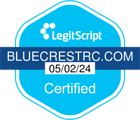In rare instances, people will hit a low point in their lives that will force them to turn to harmful substances. A survey done by the Substance Abuse and Mental Health Services Administration (SAMHSA) in 2023 showed that at least 134.7 million people turn to alcohol, 49.9 million to tobacco, and 43.6 million to marijuana.
People need to recognize the signs of addiction before they become a statistic. Sometimes, these indicators can be difficult to watch out for people who are unaware that they’re already abusing these substances. By knowing the signs, individuals can quickly find a solution before they become high-functioning addicts.
What Is a High-Functioning Addict?
A high-functioning addict is someone who struggles with addiction but cannot maintain the appearance of a normal life, often managing to hold down a job, fulfill family responsibilities, and engage in social activities. Despite their substance use, they still function effectively enough in day-to-day life that their addiction might not be immediately obvious to others.
High-functioning addicts usually have double lives or may justify their addictive behaviors by pointing to their ability to achieve certain life milestones or goals. However, over time, substance abuse can take a toll, potentially leading to health issues, relationship problems, and a decline in professional or personal performance.
Suggestive Signs of a High-Functional Addict
As mentioned before, identifying addiction in high-functioning individuals can be challenging, as they often manage to conceal their underlying issues under a facade of normalcy. However, there are several telltale signs to look out for:
- Secretive Behavior. They may go to great lengths to hide their substance use, such as lying about their whereabouts or activities or minimizing the amount they consume.
- Changes in Mood or Behavior. While they may seem composed in public, they can exhibit mood swings, irritability, or changes in personality in private settings.
- Increased Tolerance. They may require increasing amounts of a substance to achieve the same effect, which frequently indicates a higher level of dependence.
- Neglecting Responsibilities. Although they manage to meet most obligations, there may be subtle signs of neglect, such as missed deadlines, declining work performance, or withdrawal from social commitments.
- Rationalizing or Justifying Use. They may consistently make excuses for their substance use, citing stress or the need to relax as reasons for their behavior.
- Financial Difficulties. Despite having a stable job, they may frequently borrow money, have unexplained financial issues, or spend excessively on substances.
- Physical Signs. Over time, substance abuse can result in physical changes, including weight loss, lack of grooming, unexplained injuries, or frequent health problems.
- Deterioration of Relationships. There may be increasing tension or conflict in personal relationships, which can be a result of erratic behavior or breaking promises related to substance use.
- Loss of Interest in Previously Enjoyed Activities. They may withdraw from hobbies or social activities they used to enjoy, focusing instead on opportunities to use substances.
- Professional Success Despite Signs of Use. While successful in their careers, there might be anomalies, including frequent absenteeism or unexplained dips in productivity, that they manage to cover up.
- Increasing Isolation. They might avoid gatherings where substance use is not possible or limit interactions to circles that support or tolerate their behavior.
Recognizing these signs can be the first step in addressing the issue and encouraging someone to seek help. However, intervention should be approached with sensitivity and understanding as one may not be going through substance abuse. It’s always best to talk to an addiction specialist for concrete answers.
What Are the 5 Levels of Addiction?
The concept of levels or stages of addiction helps to learn the progression of substance use and its impact on an individual. While different models may categorize these stages slightly differently, a commonly recognized framework includes the following five levels:
1. Experimentation
In the first stage, an individual tries a substance behind closed doors out of curiosity, peer pressure, or the desire to experience its effects. Experimentation is often sporadic and occurs in social settings. At this level, the individual does not experience any severe consequences and usually retains control over their use. However, initial experimentation can sometimes lead to more regular use.
2. Regular Use
During active addiction, substance use becomes more habitual. The individual may start incorporating the substance into their everyday life. Although their use has increased, they typically do not feel addicted and may still function normally in daily life. Some warning signs may begin to appear, such as using the substance as a coping mechanism or starting to neglect responsibilities occasionally.
3. Risky Use
Risky use is characterized by a pattern of use that begins to threaten the individual’s mental and physical health and well-being. This includes using substances in dangerous situations (e.g., driving under the influence), experiencing strained relationships, or showing a decline in work or academic performance. At this stage, users may recognize the problematic nature of their use but continue the behavior, frequently rationalizing or justifying it.
4. Dependence
Dependence can be physical, psychological, or both.
- Physically, it involves the development of tolerance (needing more of the substance to achieve the same effect) and withdrawal symptoms when the substance is not used.
- Psychologically, there’s an emotional reliance on the substance to feel normal or cope with stress. Individuals at this stage may struggle to control their use and often experience significant lifestyle and relationship impacts.
Dependence signals a more serious and entrenched pattern that requires attention from an addiction treatment center.
5. Addiction
At this final stage, addiction is fully manifest and is often referred to as substance use disorder (SUD). The individual exhibits a compulsive need to use the substance despite knowing the negative consequences. Their life increasingly revolves around obtaining and using the substance, leading to profound impacts on health, relationships, employment, and overall quality of life.
Understanding these levels can aid in identifying where someone might be on the spectrum of substance use and knowing the appropriate level of intervention and support. Early recognition and proactive measures can often prevent the progression from one stage to another, minimizing long-term harm.
When to Seek Help for Addiction
Knowing the signs showing it’s time to seek help for addiction can be complex, especially for high-functioning individuals who may still manage daily responsibilities. However, early intervention can prevent further harm and achieve successful recovery.
Here are some critical moments and situations when to reach out for professional support:
- Loss of Control. When you find it increasingly difficult to control or limit your substance use, it’s a clear sign that help is needed.
- Neglecting Responsibilities. If substance use is causing you to neglect responsibilities at work, school, or home, it’s time to seek support.
- Relationship Strain. Seek help when substance use begins to negatively impact your relationships with family, friends, or colleagues.
- Physical and Mental Health Issues. When substance use results in health problems, such as chronic illnesses or mental health issues, like anxiety or depression, professional help is crucial.
- Experiencing Withdrawal Symptoms. If you experience withdrawal symptoms when not using the substance, it’s a sign of physical dependence that requires medical attention.
- Failed Attempts to Quit. If you’ve tried to quit or cut back on your own and have been unsuccessful, it indicates the need for support.
- Increasing Tolerance. Developing a higher tolerance, meaning you need more of the substance to achieve the same effect, suggests a growing dependence that should be addressed.
- Risky Behaviors. Engaging in dangerous activities while under the influence, such as driving or putting yourself in unsafe situations, signals the need for intervention.
- Emotional Distress. Experiencing persistent feelings of guilt, shame, or hopelessness related to your substance use indicates that professional support could be beneficial.
- Legal or Financial Trouble. Legal issues or financial difficulties stemming from substance use are serious indicators that help is needed.
Examples of Professions That Carry the Highest Risk for Functional Addiction
Certain professions are associated with higher risks of addiction due to unique stressors, environments, or access to substances. Here are examples of professions that may lead to addiction:
- Healthcare Professionals. Healthcare workers, including doctors, nurses, and paramedics, often face high levels of stress, long hours, and the emotional burden of dealing with illness and death. Their access to prescription medications can also increase the risk of substance misuse as a coping mechanism.
- Food and Beverage Industry Workers. Employees in restaurants and bars are frequently exposed to alcohol and sometimes drugs during work hours. The industry is also known for its irregular hours, high-pressure environments, and culture that may normalize substance use during and after shifts, leading to increased chances of showing functioning alcoholic signs.
- First Responders. Police officers, firefighters, and EMTs regularly face traumatic and high-stress situations. The physical and emotional demands of the job, coupled with irregular shifts and potential exposure to injury, can lead to mental health issues and substance use as a form of self-medication for stress or PTSD.
- Construction Workers. Construction work is physically demanding and often comes with a high risk of injury, leading to potential painkiller misuse. Additionally, job instability and seasonal work can contribute to stress, increasing the likelihood of functional addiction.
- Entertainment Industry Professionals. Musicians, actors, and other entertainment figures usually work in environments where alcohol and drugs are prevalent. The irregular hours, pressure to perform, public scrutiny, and culture within the industry can contribute to substance abuse issues.
- Finance and High-Stakes Business Professionals. Individuals in finance and other high-pressure business roles often face intense stress, high stakes, and long working hours. The competitive nature of these industries can cause professionals to use stimulants or alcohol to maintain energy levels or relax after work.
While these professions are identified as having higher risks for addiction, it’s important to acknowledge that not everyone within these fields will develop substance use issues. Individual experiences and resilience vary greatly, and many professionals successfully manage the challenges of their jobs without resorting to substance misuse.
Types of Treatment Programs for High-Functioning Addicts
High-functioning addicts can benefit from a variety of treatment programs customized to their needs and circumstances. Some examples of treatment programs available in addiction treatment centers include:
Outpatient Treatment
Outpatient programs provide time flexibility, allowing individuals to maintain their daily responsibilities while attending therapy sessions and support groups. They are suitable for those who do not require intensive supervision and can include individual counseling, group therapy, and education on managing addiction.
Inpatient or Residential Treatment
These programs involve staying at a treatment facility for a designated period, offering an immersive environment away from triggers. Inpatient treatment provides extensive medical and therapeutic support, which is great for those needing a structured environment to focus on recovery.
Intensive Outpatient Programs (IOP)
IOPs offer a middle ground between inpatient and outpatient care. Participants attend therapy sessions several times a week for several hours, allowing them to receive intensive treatment while still living at home and fulfilling other responsibilities.
Partial Hospitalization Programs (PHP):
PHPs are similar to IOPs but require a more time commitment. They often function like a full-time treatment program during the day and allow individuals to return home in the evenings. These programs provide medical monitoring, structured therapy, and support.
Individual Therapy
One-on-one sessions with a therapist can help individuals explore the underlying causes of their addiction, develop coping strategies, and work through personal challenges. Therapeutic approaches can include cognitive-behavioral therapy (CBT), motivational interviewing, and more.
Group Therapy
Group therapy offers peer support and the opportunity to share experiences with others facing similar challenges. It builds a sense of community and accountability and is often a core component of addiction treatment programs.

12-Step Programs
Programs like Alcoholics Anonymous (AA) or Narcotics Anonymous (NA) follow a structured set of principles encouraging participants to admit powerlessness over addiction and seek guidance from a higher power and a support community. These programs often emphasize peer support and mentorship.
Medication-Assisted Treatment (MAT)
MAT combines medication with counseling and behavioral therapies to treat substance use disorders. Medications can manage withdrawal symptoms, reduce cravings, and facilitate recovery. It is particularly effective for opioid and alcohol addictions.
Holistic or Alternative Therapies
These therapies include yoga, meditation, acupuncture, and art or music therapy, aiming to address the mind, body, and spirit. Holistic approaches can complement traditional therapies by reducing stress and promoting overall well-being.
Avoid Becoming a High-Functional Addict by Booking an Appointment With Us Now!
Are you or a loved one showing signs of high-functioning addiction? Choose BlueCrest Recovery Center to guide you towards a healthier, addiction-free future. Our compassionate team can provide personalized treatment plans for each individual’s needs. We combine evidence-based therapies with holistic approaches to achieve comprehensive care in a supportive environment.
Take the first step towards reclaiming your life—contact BlueCrest Recovery Center today to schedule a consultation. Your journey to a better tomorrow begins here!


















